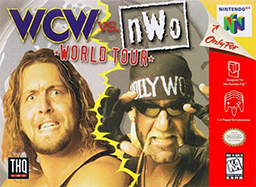
WCW vs. nWo: World Tour is a professional wrestling video game released in 1997 for the Nintendo 64 game console. Released at the peak of World Championship Wrestling's (WCW) dominance in the Monday Night War, World Tour was THQ's first foray into the N64 wrestling scene and is a semi-sequel to the lesser known WCW vs. the World for the PlayStation. It is the second best-selling wrestling game for the N64 console.

WWF WrestleMania 2000 is a professional wrestling video game released in 1999 on the Nintendo 64 (N64) console. It was based on the World Wrestling Federation's annual pay-per-view, WrestleMania. Despite the fact that this game is based upon WrestleMania 2000, the game was released five months prior to the actual PPV itself, therefore resulting in the game using the stage design from the 1999 event, WrestleMania XV, instead. Released at the height of the WWF's Attitude Era, WrestleMania 2000 was the first WWF game released by THQ. The wrestling company ended its long relationship with Acclaim Entertainment after witnessing the video game success of its competitor, World Championship Wrestling (WCW), on behalf of THQ. WrestleMania 2000 shares its game engine with the Japan-only release Virtual Pro Wrestling 2: Ōdō Keishō.

WWF No Mercy is a professional wrestling video game released in 2000 by THQ for the Nintendo 64. It is based on the World Wrestling Federation and is named after the company's annual event of the same name. Developed by Asmik Ace Entertainment and AKI Corporation, No Mercy is the last in a series of Nintendo 64 wrestling games from the companies that started with WCW vs. nWo: World Tour.

Vigilante 8 is a vehicular combat video game developed by Luxoflux and published by Activision for PlayStation, Nintendo 64, and Game Boy Color. Although officially it has no connection to the Interstate '76 series, it features several of its themes.
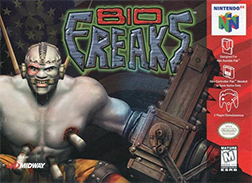
Bio F.R.E.A.K.S. is a 3D fighting video game released by Midway in 1998. It was originally planned for arcades. Prototypes of the game were tested at arcades, but the final arcade release was canceled and the game was later released for the PlayStation, Nintendo 64 and Microsoft Windows.

Madden NFL 99 is a football video game released for the PlayStation, Nintendo 64 and Microsoft Windows. It is the first multiplatform Madden game to be fully 3D and polygonally based and is also the first game to feature Franchise mode. The game's commentary is by John Madden and Pat Summerall. The American version of the game features John Madden himself on the cover, while the European version uses Garrison Hearst instead. The game was the top-selling PlayStation sports video game in 1998 in North America, having sold 1.1 million copies on the PlayStation.

NBA Live 99 is the fifth installment of the NBA Live video games series. The cover features Antoine Walker of the Boston Celtics. The game was developed by EA Sports and released on November 4, 1998, for the Nintendo 64, and then on November 10, 1998, for the Windows and PlayStation. Don Poier is the play-by-play announcer. It was the first NBA Live game released for Nintendo 64. NBA Live 99 was followed by NBA Live 2000.

S.C.A.R.S. is a racing video game developed by Vivid Image and published by Ubi Soft for PlayStation, Nintendo 64, and Microsoft Windows in 1998.

WCW Mayhem is a professional wrestling video game published by Electronic Arts (EA), based on the American promotion World Championship Wrestling (WCW). The first WCW game produced by EA, it was released for Nintendo 64 and PlayStation in 1999 and for the Game Boy Color the following year.
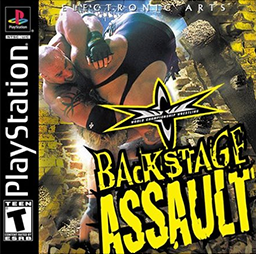
WCW Backstage Assault is a professional wrestling video game developed by Kodiak Interactive and published by Electronic Arts. It was released for the PlayStation in November 2000, and for the Nintendo 64 in December. It was the final World Championship Wrestling (WCW) game released before the World Wrestling Federation (WWF) purchased the company's assets three months later. Backstage Assault features commentary by Tony Schiavone and Bobby "The Brain" Heenan. The game is distinguished by the fact that all gameplay takes place outside of a standard wrestling ring, an approach that was poorly received, and resulted in the title selling 200,000 copies.

WWF Attitude is a professional wrestling video game based on the World Wrestling Federation released by Acclaim Entertainment in 1999 for the PlayStation and Nintendo 64. A slightly enhanced port of the game was later released for the Dreamcast, as well as a handheld version for the Game Boy Color. The game is named after the WWF's then-current "Attitude" marketing campaign, with the tagline "Get it" also being used on company programming during that period.

ECW Hardcore Revolution is a professional wrestling video game released by Acclaim Entertainment, based on the professional wrestling promotion Extreme Championship Wrestling (ECW). The game was released for the Nintendo 64, PlayStation, Game Boy Color, and Dreamcast in 2000. It was the first wrestling game to be based on ECW, as well as the first professional wrestling video game to receive a Mature rating from the ESRB, although the Game Boy Color version was rated Everyone. Acclaim followed this title with the release of a sequel, ECW Anarchy Rulz, in August 2000.

Nagano Winter Olympics '98, known in Japan as Hyper Olympics in Nagano, is a multi-event sports game from Konami. It is based on the 1998 Winter Olympics and features 10 Olympic events including skating, skiing, luge, bobsleigh, slalom, curling, halfpipe and snowboarding. The game is part of the Track & Field/Hyper Sports series and would be the last licensed Olympic video game released on a Nintendo home console until Mario & Sonic at the Olympic Games about nine years later.
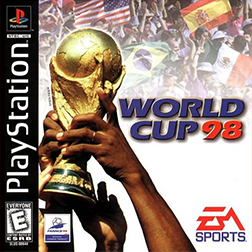
World Cup 98 is a football video game released in 1998 to coincide with that year's FIFA World Cup football tournament, developed by EA Canada and published by Electronic Arts under their EA Sports label. It is the first official FIFA World Cup game developed by EA Sports after obtaining the rights from FIFA in 1997. Unlike the previous World Cup games, which were in 2D and showed a bird's-eye view, World Cup 98 used a 3D engine, utilising DirectX for the PC version.

Armorines: Project S.W.A.R.M., known as Armorines in Europe, is a 1999 first-person shooter developed by Acclaim Studios London and released for the Nintendo 64, Game Boy Color and PlayStation. It is based on the Armorines comic book from Valiant Comics, which was bought by Acclaim Entertainment.
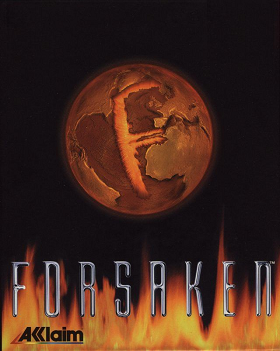
Forsaken is a 1998 first-person shooter video game. It was developed by Probe Entertainment for Microsoft Windows and PlayStation and Iguana UK for the Nintendo 64 and published by Acclaim Entertainment. A remastered version was released in 2018 for Microsoft Windows, macOS, Linux and Xbox One.

NBA In The Zone '99, known in Europe as NBA Pro 99, is a basketball game for the Nintendo 64 and PlayStation, released in 1999. It is the fourth installment of the NBA In The Zone series. The game has two covers of NBA All-Star Glen Rice,.
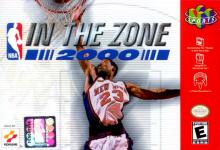
NBA In The Zone 2000 is a basketball video game released for the Nintendo 64, PlayStation, and Game Boy Color in 2000. It is the fifth and final installment of the NBA In The Zone series. The cover features Marcus Camby of the New York Knicks.
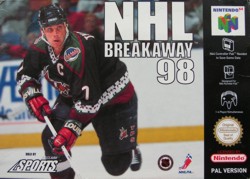
NHL Breakaway 98 is a 1997 ice hockey video game for the PlayStation and Nintendo 64. It was the first hockey game to come from Acclaim Entertainment and the first game released under the publisher's new Acclaim Sports label. The game met with divisive reviews upon its release for the PlayStation, though the game's management mode and its system of using points to improve aspects of a team received widespread praise, but reviews for the later Nintendo 64 version were more consistently favorable. It was followed by a sequel, NHL Breakaway 99, released the following year.
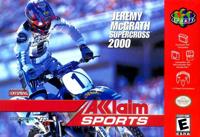
Jeremy McGrath Supercross 2000 is a motocross racing video game developed by Acclaim Studios Salt Lake City and published by Acclaim Entertainment under their Acclaim Sports label for Nintendo 64, Game Boy Color, PlayStation and Dreamcast. It features eight stadium tracks, eight outdoor tracks, and an option for players to create their own custom tracks. In addition to having a racing game mode, players could perform dirt bike tricks in a stunt mode.





















